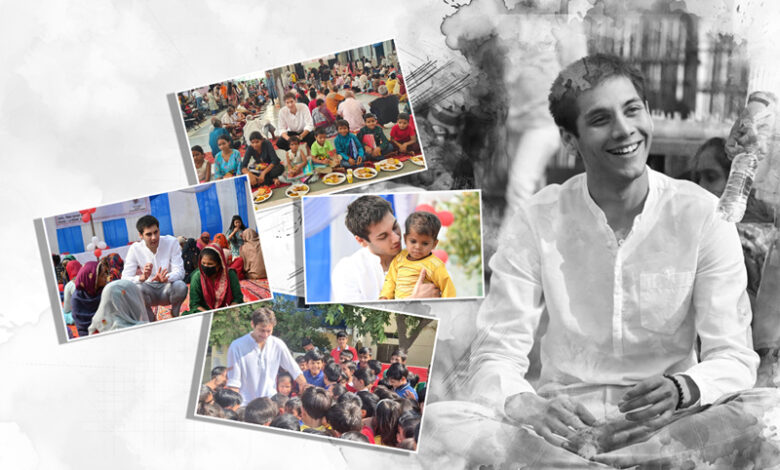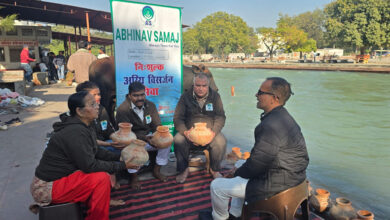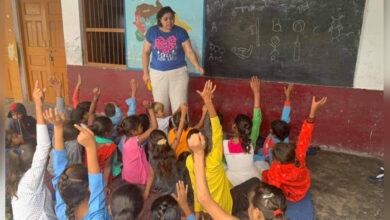Jas Kalra’s India of Dignity: Inside the Earth Saviours Foundation’s Quiet Humanitarian Model

In the forgotten folds of Bandhwari village, beyond the shimmer of Gurgaon’s skyline, lies a world that seems to have quietly stepped outside the march of time. Here, there are no hierarchies, no lines dividing caste, gender, or status-only individuals held together by a single, fragile promise: dignity.
This is The Earth Saviours Foundation (TESF), a sanctuary that has evolved into one of India’s most profound experiments in compassion-led living. Founded in 2008 by the late humanitarian Ravi Kalra, the Foundation continues today under the thoughtful and contemplative leadership of Jas Kalra, whose quiet conviction has turned it into something greater than an institution-it has become a philosophy in practice.
From Shelter to System
Over the years, TESF has rescued and rehabilitated thousands of abandoned senior citizens, women, and individuals with mental illnesses-people who have slipped through the cracks of society’s conscience. But under Jas’s guidance, it has transformed from being a refuge into a living ecosystem of structured compassion.
“Compassion alone cannot hold the weight of dignity,” Jas often says. “The heart begins the work, but the mind must sustain it.”
That balance-of empathy and order-defines the new TESF. Every resident is cared for through systems that combine warmth with structure. Health routines are followed with precision. Nutrition, hygiene, and emotional well-being are treated as interconnected forms of care. Volunteers are trained not just to help but to understand. And yet, beyond all systems and checklists, what truly defines the place is its attention to small human details-a clean shirt folded neatly, a birthday remembered, a hand held through a sleepless night.
Here, dignity is not a slogan. It’s a discipline.
The Forgotten Parents
Among TESF’s most haunting and yet redemptive stories are those of parents abandoned by their own children. Once the anchors of their families-teachers, homemakers, soldiers, and professionals-they now arrive at the Foundation in disbelief, often found wandering after being left at bus stops, outside hospitals, or simply cast away without a goodbye.
But at Sewa Dham, the Foundation’s shelter, invisibility ends. Mealtimes become shared rituals. Birthdays are celebrated with laughter and song. Residents sing old melodies from their youth, and slowly, the silence of rejection is replaced by conversation, comfort, and care.
For Jas, every story is a reflection of the nation’s collective conscience.
“Abandonment isn’t a personal tragedy,” he says softly. “It’s a social fracture. When we turn away from our elders, we lose something of our own humanity.”
Some parents still wait, years later, believing their children might return. Others have found new families within these walls-bonded not by blood, but by shared grief and rediscovered grace.
A Model Rooted in Indian Ethos
Unlike many organisations that frame service as charity, TESF is built upon the ancient Indian ideal of seva-service as duty, not transaction. The Foundation’s rhythm echoes traditional Indian values where care for elders, compassion for the destitute, and respect for life and death are seen as sacred responsibilities, not acts of benevolence.
Yet this deeply cultural model carries a quiet modernity. Its approach to caregiving-emphasising autonomy, emotional healing, and purpose-has made it a space where old Indian wisdom meets contemporary humanism.
Even death is treated with reverence here. The Foundation’s cremation services for unclaimed bodies are performed with full rituals and respect. Each pyre becomes a testament to the belief that dignity does not end with breath.
In every sense, TESF stands as an ethical ecosystem-a self-sustaining model where compassion is institutionalised without ever being industrialised.
The Leadership Behind the Mission
Jas Kalra is not a conventional NGO head. Poised and reflective, he often speaks in a tone that belongs more to philosophers than administrators. His essays, part of his Vision for India series, explore how leadership can “hold space for empathy without losing accountability.”
Under his direction, the Foundation has begun documenting its impact not merely in numbers but in transformations-trust restored, families reunited, individuals finding confidence after years of silence.
“Development,” he writes, “is not just about how many people you reach. It is about how many people rediscover their sense of self-worth.”
In his world, governance and grace are not opposites-they are companions.
A Quiet Revolution of Values
In a time where compassion is often packaged as content and social service is measured by metrics, The Earth Saviours Foundation stands as a quiet revolution. It operates without spectacle, thriving instead on the silent strength of routine kindness.
Here, leadership is presence, not position. Service is not performed for applause but lived through consistency.
As dusk settles over Bandhwari, a few residents sit together in the courtyard-reading, praying, laughing. The air carries the faint sound of a bhajan. In that moment, the purpose of The Earth Saviours Foundation becomes clear: to make visible the lives the world has chosen not to see, and in doing so, remind us of our own.






